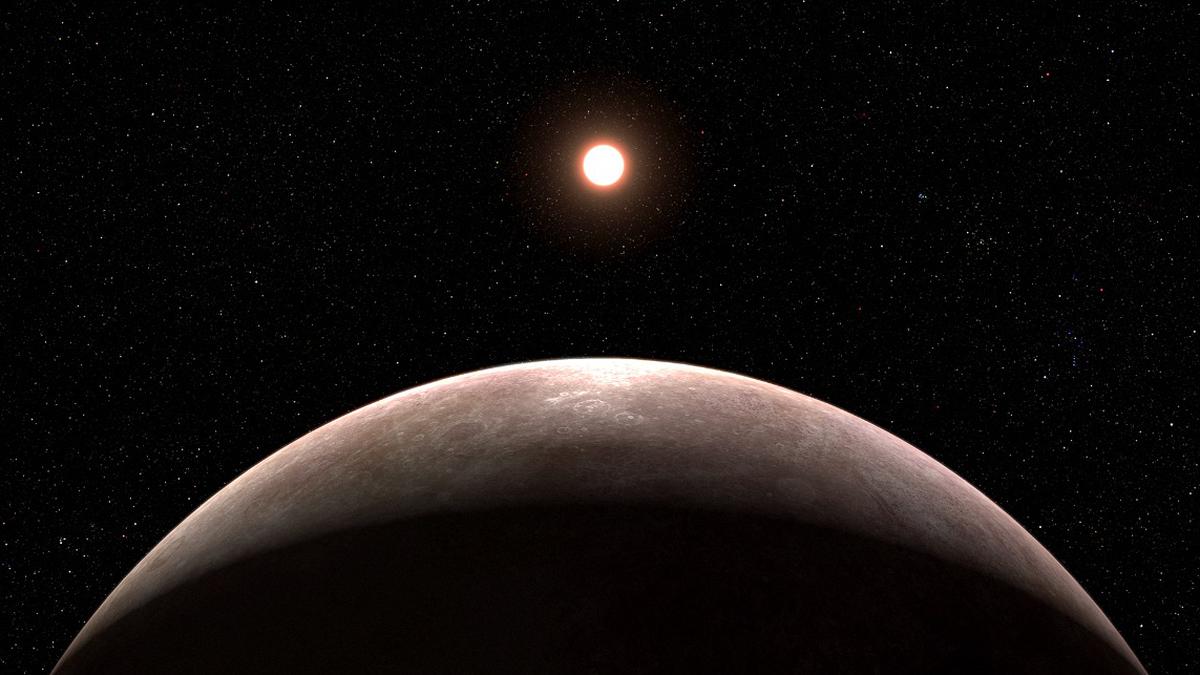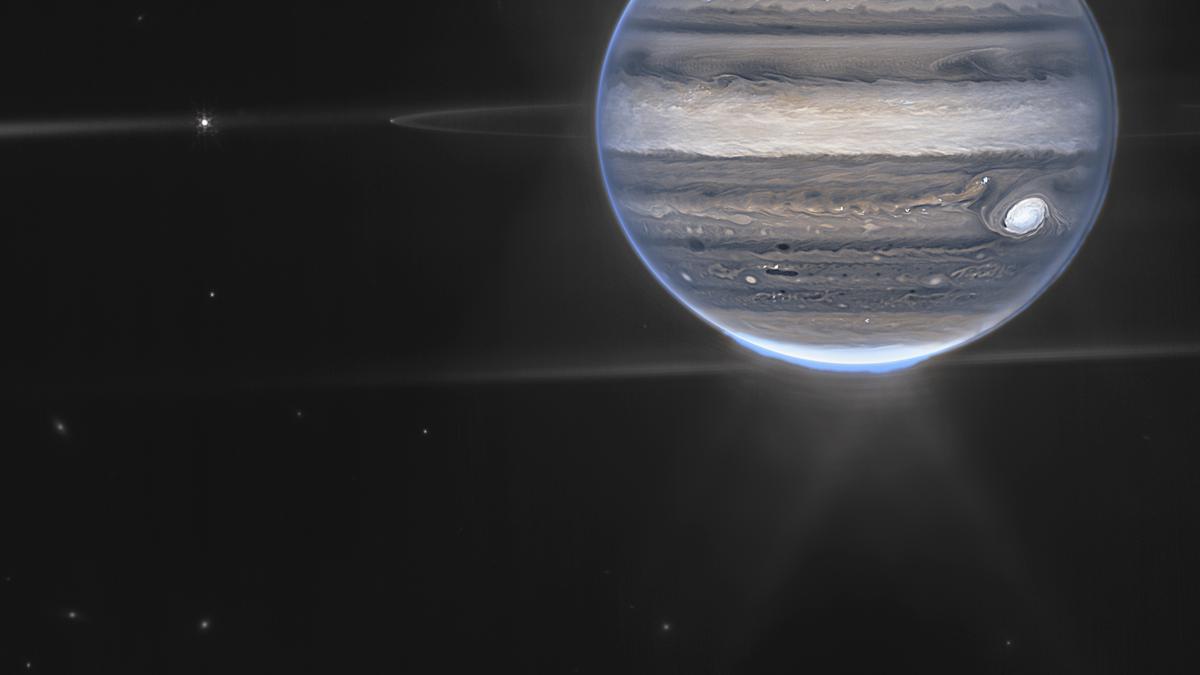Explained | The James Webb telescope’s confirmation of its first exoplanet

The story so far: After a spectacular first set of images last year, including those of the birthplaces and deathbeds of stars, and the cosmic waltz of galaxies, the National Aeronautics and Space Administration’s (NASA) James Webb Space Telescope (JWST), the largest and most powerful one ever launched into space, began its year by confirming an exoplanet.
The exoplanet, formally christened LHS 475 b, is almost exactly the size of the Earth, clocking in at 99% of our home planet’s diameter. NASA announced on January 11 that a team of two researchers — Kevin Stevenson and Jacob Lustig-Yaeger, both from the Johns Hopkins University Applied Physics Laboratory in Laurel, Maryland— confirmed the exoplanet using the JWST.
What are exoplanets and why do we study them?
Can life exist on planets besides our own? Are we alone in the universe? These are some of the profound questions humans have been seeking to answer for time immemorial.
Exoplanets are planets beyond our solar system. While these planets usually orbit other stars, some are free-floating and orbit the centre of the galaxy.
While the concept of these planets existed in theory and science fiction for centuries, the first discoveries of actual exoplanets or extrasolar planets took place in the 1990s. In 1992, two astronomers spotted two masses large enough to be planets, orbiting a pulsar (the dense remains of a dead star sending pulsating beams of light while rotating swiftly) about 2,000 light-years away. Then, in 1995, two researchers found the first exoplanet orbiting a sun-like star called 51 Pegasi. This exoplanet was a ‘hot Jupiter’ kind—a hot gas-rich giant orbiting close to its host star. This exoplanet was closer in orbit to its star than Mercury and our sun.
According to NASA, more than 5,000 exoplanets have been detected till date, and astronomers calculate that at least one exoplanet on average exists for every star visible in the night sky. The closest exoplanet, Proxima Centauri b, is orbiting a red dwarf star about 4.25 light-years away (one light-year equals 9.46 trillion kilometres).
So far, both ground and space telescopes, using different methods, have discovered exoplanets varying in size, mass, composition, the number of planets orbiting a star (planetary systems) or the number of stars orbited by the planet.Compositions of these exoplanets have varied from rocky (like the Earth or Venus), gas-rich (like Jupiter or Saturn), or even planets the density of styrofoam orcovered in molten seas of lava. Exoplanets tend to have similar elements to planets in our solar system but with varying ratios. For instance, some might have more water or more carbon.

Some types of exoplanets that have been discovered so far. Source: NASA, adapted by The Hindu.
Discovering the characteristics of exoplanets not only tells us how they formed and evolved or whether life is potentially possible beyond the earth, but also helps us understand our own solar system better. For instance, the BBC’s Sky At Night magazine notes that based on their compositions, some exoplanets could not have formed as close to their parent stars as they are now, so they must have closed in later, pointing to the fact that planets can move from their sites of formation.
How do we discover exoplanets?
While there are five ways that have been used to discover exoplanets, NASA states two key techniques —
Transit method: This involves noticing dips in the light curve from the parent star— when a planet passes or transits directly between an observer and the star it orbits, it blocks some of that starlight. The star’s light, thus, gets dimmer for a brief period, enough for astronomers to detect the presence of an exoplanet orbiting the star.
So far, 3941 planets have been discovered using the transit method.

Detecting exoplanets through the radial velocity method. Source: European Space Agency
Radial velocity method: When a planet orbits a star, its gravitational pull tugs at the star, causing it to wobble slightly. This slight movement affects the star’s light spectrum as observed through a telescope. If the star moves in the direction of the observer, NASA says, the spectrum will appear to shift towards blue and if it moves away from the observer, the shift will be towards red. When exoplanets are detected using this data, it is called the radial velocity technique.
How does James Webb tell us more about exoplanets than other telescopes?
According to NASA, “among all operating telescopes, only Webb is capable of characterising the atmospheres of Earth-sized exoplanets”. While a telescope can detect an object and show how it looks, the JWST, unlike the Hubble telescope, is fitted with a spectroscope. Spectroscopy involves analysing light rays for elemental composition, temperature of the stellar object, atmosphere of a planet and much more.
As explained by the European Space Agency, light that enters the telescope is split into its different wavelengths by a grating or a prism; this forms a spectrum of light. This spectrum is then focused onto a detector. Light from each chemical elementhas a unique spectrum, like a fingerprint. Spectroscopes can analyse these fingerprints to help us understand the physical and chemical characteristics of the source and its elemental composition.

Illustration of how spectroscopy takes place with the James Webb Telescope. Source: European Space Agency
Another unique feature of the JWST is that it is an infrared telescope— it observes the Universe in the near-infrared and mid-infrared light spectrum, which have wavelengths longer than visible light.

Illustration of how the James Webb Telescope sees the universe in infrared. Source: European Space Agency
The universe has been expanding since the Big Bang.As light travels far in space or as objects move away from us, the wavelength of light elongates. From ultraviolet or visible light, it turns infrared. As light ages, it turns redder. The light from younger, closer stars is predominately visible and ultraviolet. However, traversing the vast stretches of the expanding space, they turn into infrared rays before reaching the Earth. The JWST, thus, observes the universe in infrared, to detect ancient, early planets, stars, and galaxies.
What do we know about the new exoplanet confirmed by the JWST?
The LHS 475 b is a rocky planet, relatively close at 41 light-years away, in the Octans constellation. Findings from an earlier space survey of NASA—the Transiting Exoplanet Survey Satellite (TESS)— hinted at the existence of the new exoplanet. Webb’s Near-Infrared Spectrograph (NIRSpec) captured the planet easily and clearly with only two transit observations.
While JWST data shows that this is an Earth-sized terrestrial planet, it is not yet known if it has an atmosphere. Due to the telescope’s sensitivity, however, the researchers know what kind of atmosphere can be ruled out. “It can’t have a thick methane-dominated atmosphere, similar to that of Saturn’s moon Titan,” Mr. Lustig-Yaeger said.
They also pointed to the possibility of a pure carbon dioxide atmosphere. The JWST showed that the new exoplanet is a couple of hundred degrees warmer than Earth. The researchers believe that if clouds are detected in future observations this summer, it may indicatethat the planet is more like Venus, which has a carbon dioxide atmosphere and is perpetually shrouded in thick clouds.
With this discovery by the Webb, Mr. Lustig-Yaeger said, they “have barely begun to scratch the surface” of what atmospheres of exoplanets can be like.









